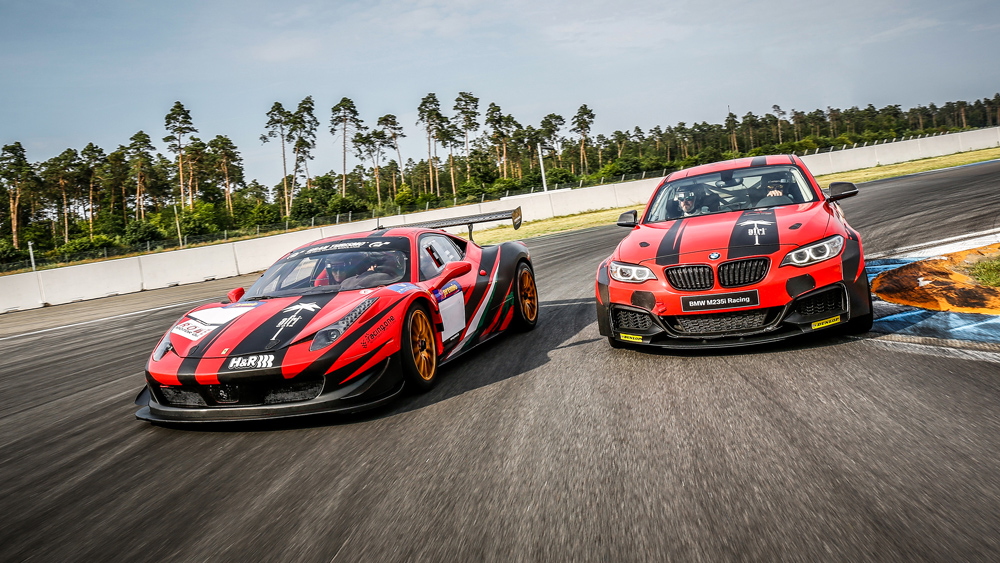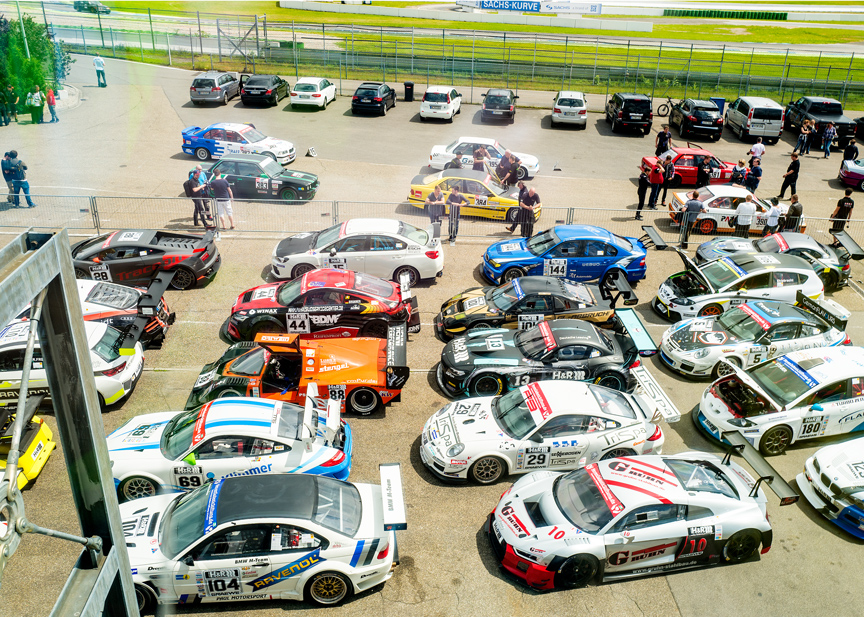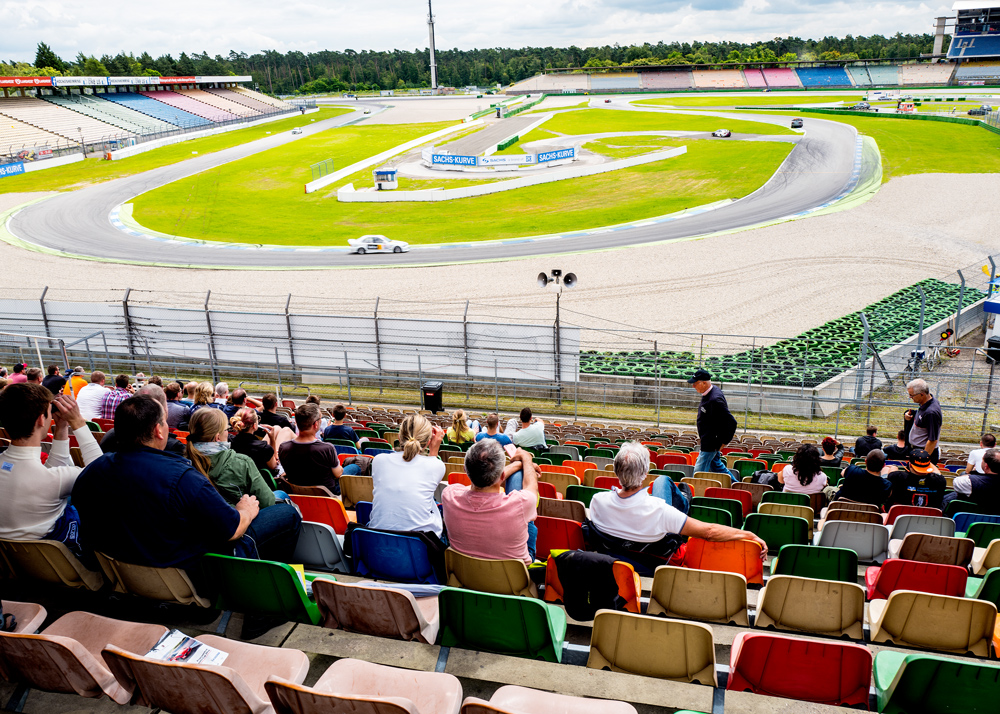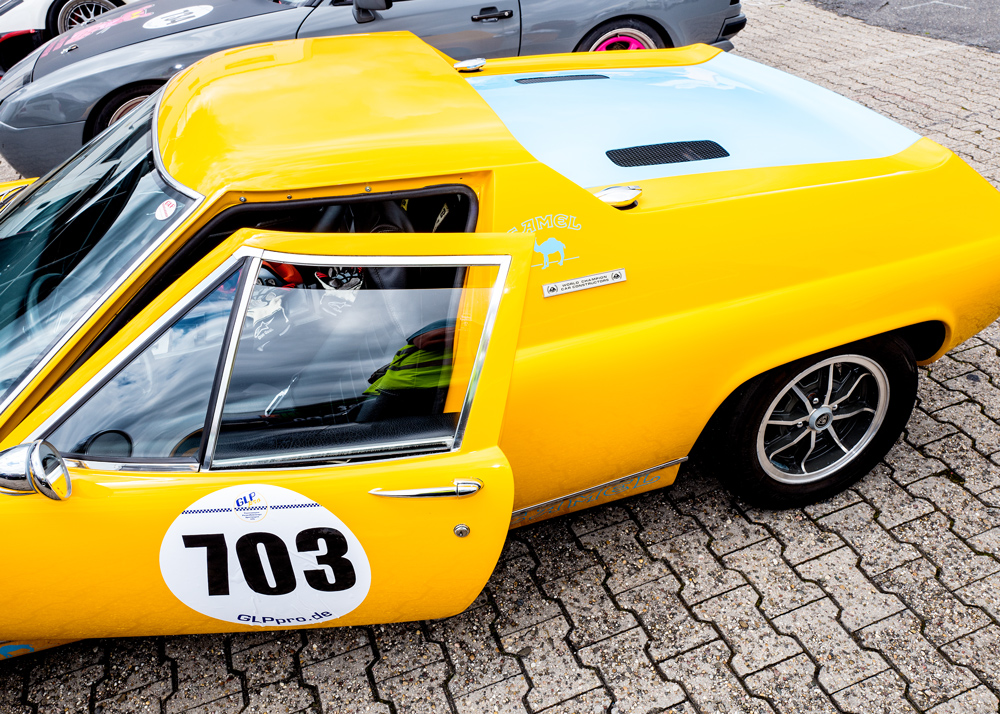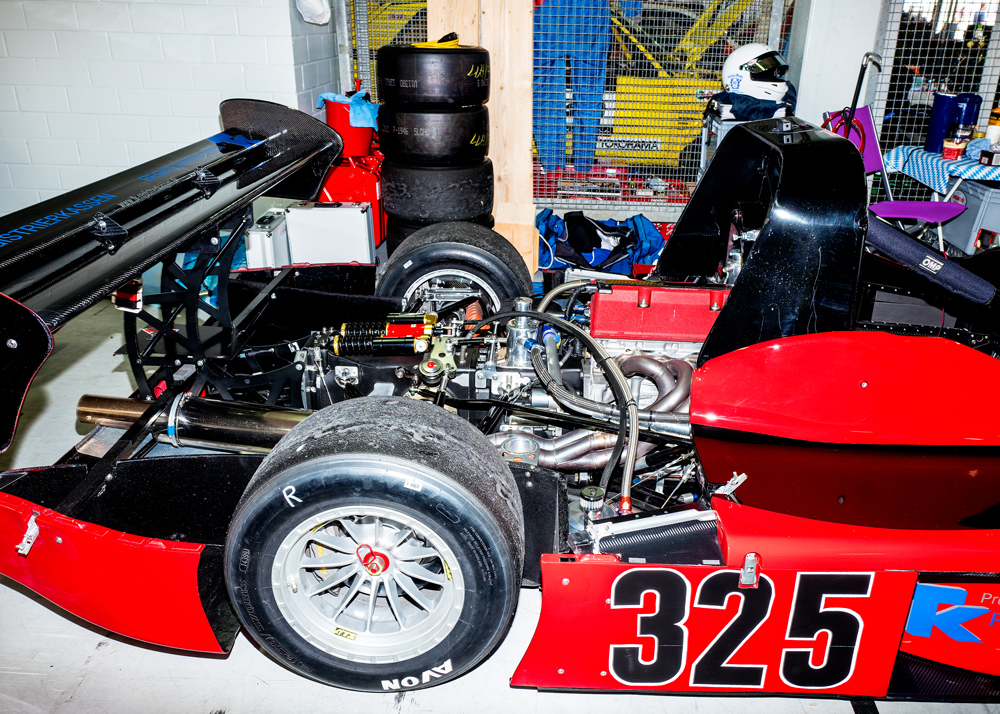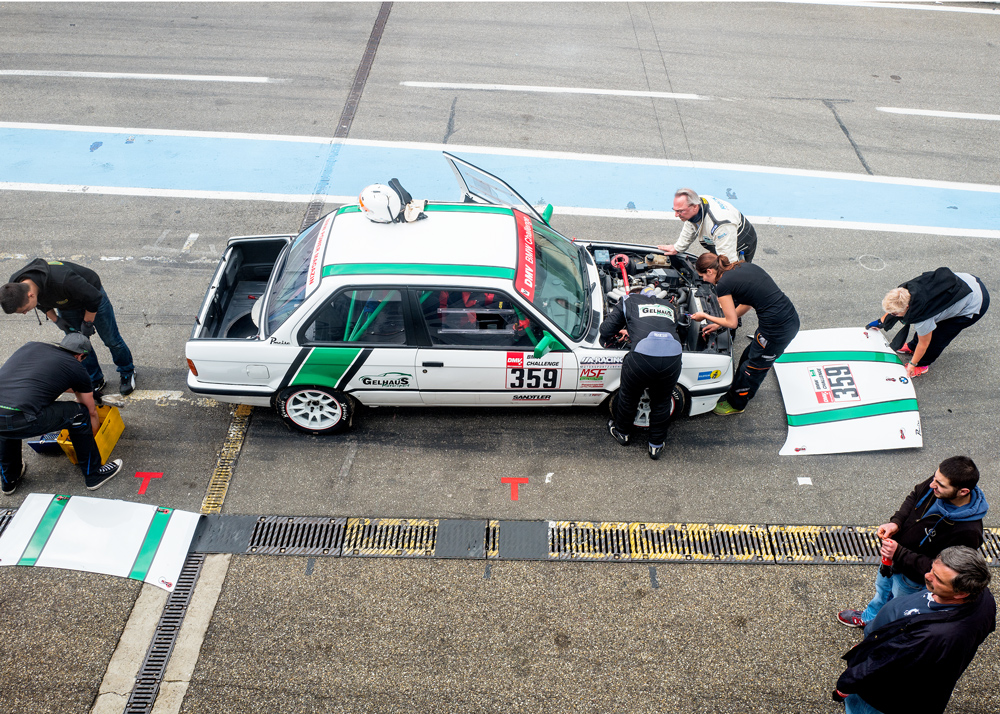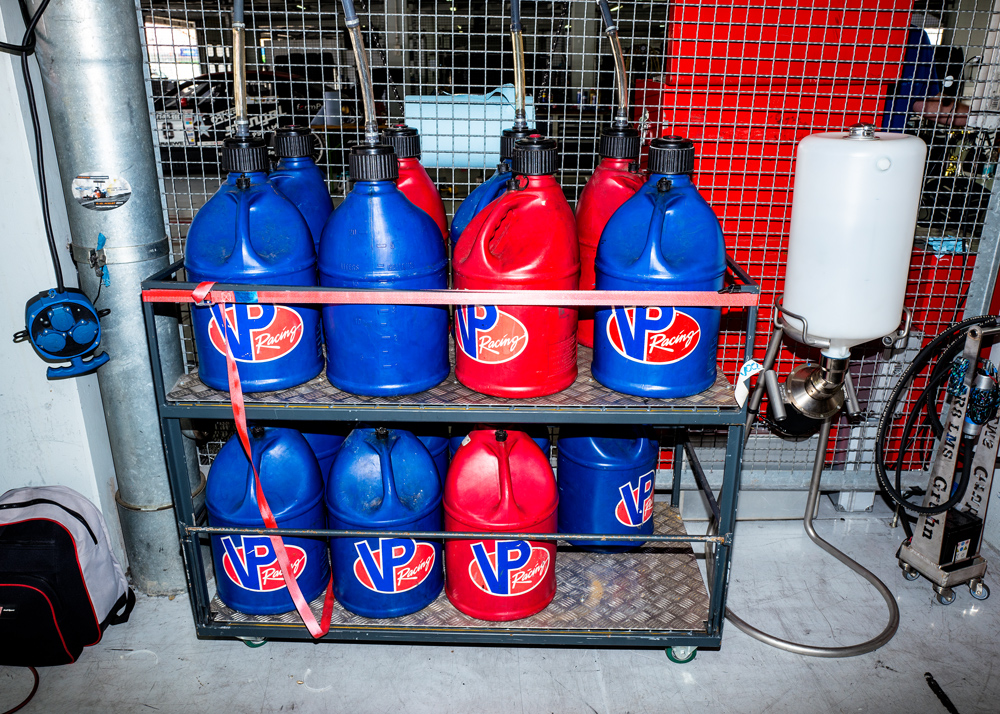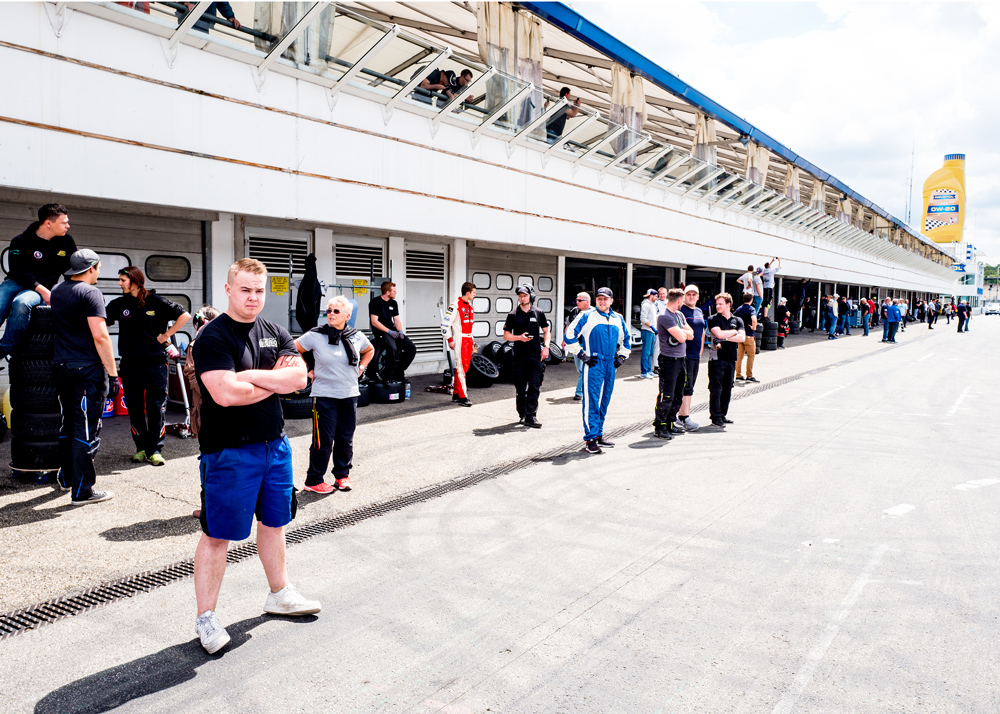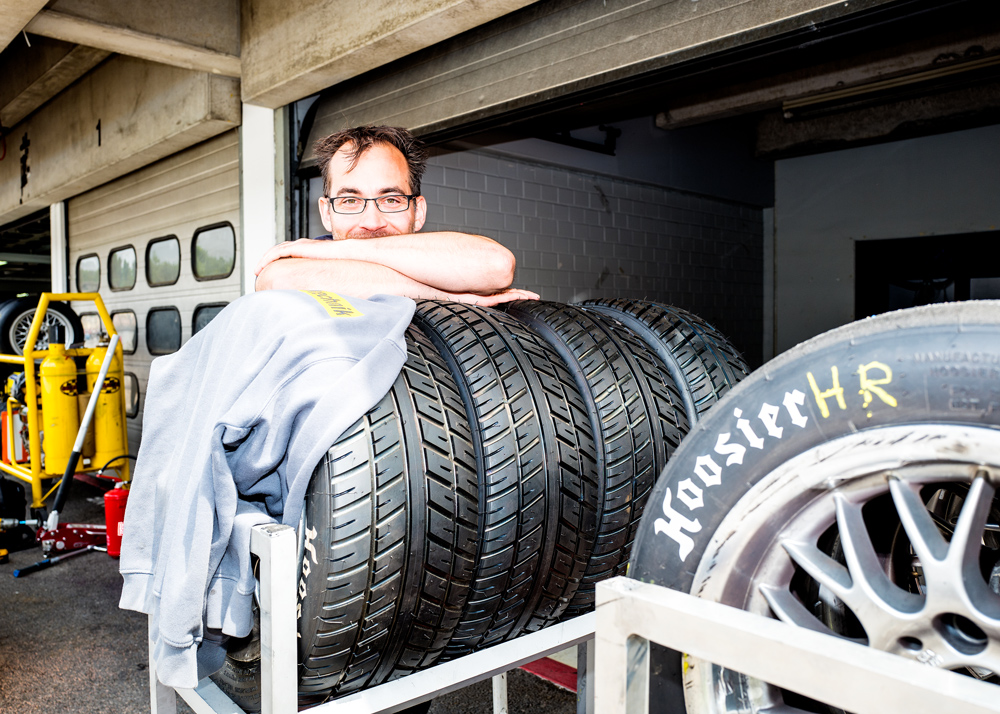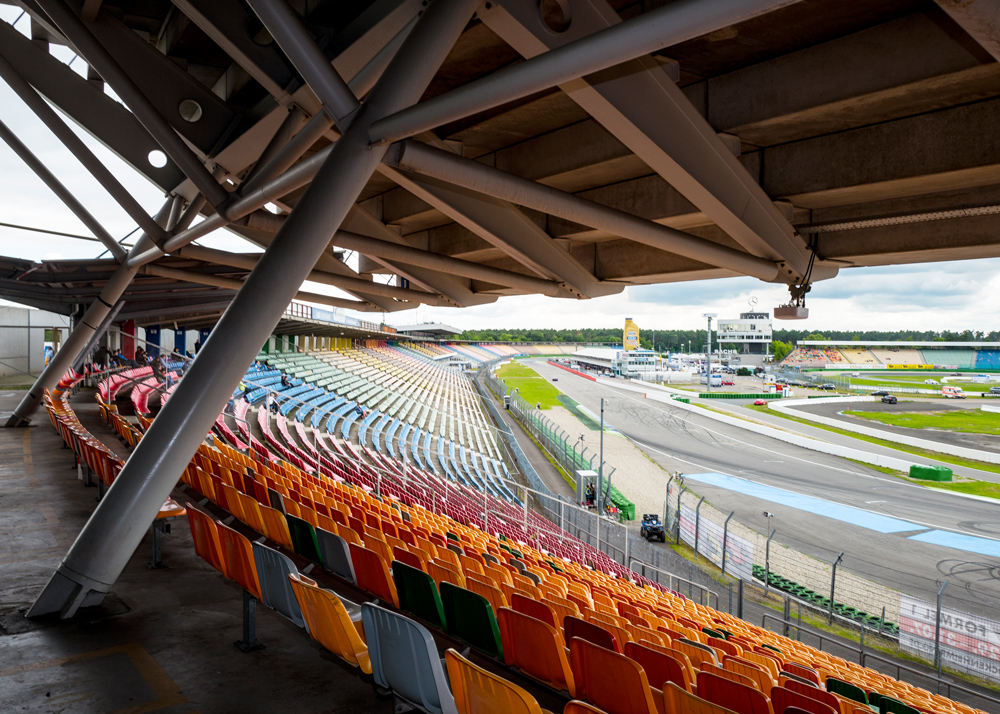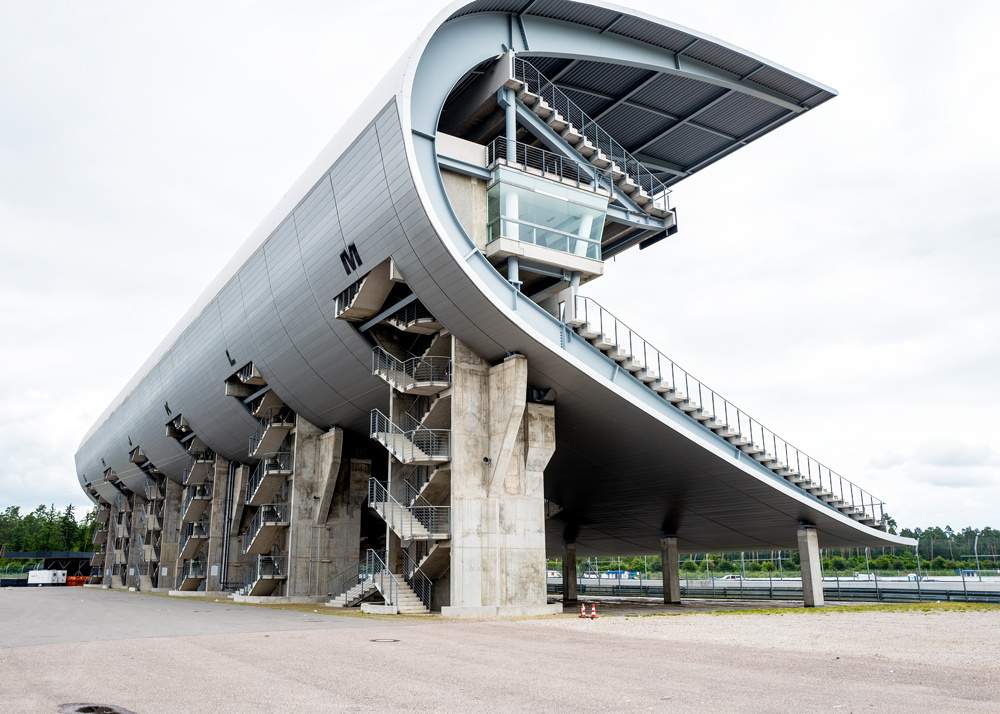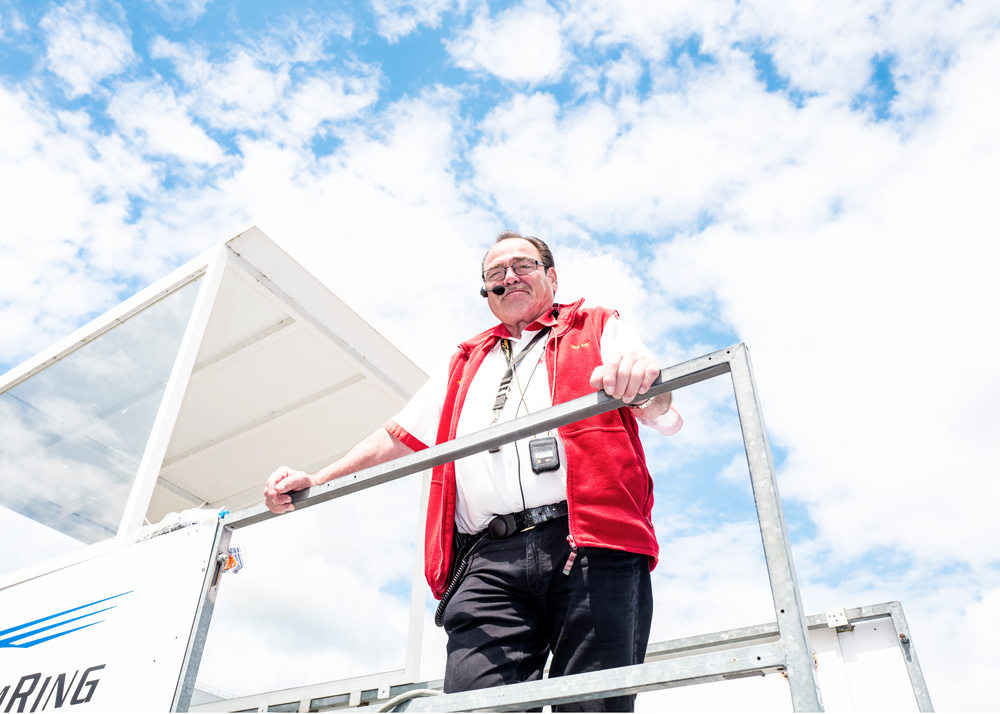In 1930, the assistant time keeper Ernst Christ came up with the idea of establishing a racetrack in his home town of Hockenheim. Only two years later, 60,000 visitors went on a pilgrimage to the first motorcycle race at the “Ring” that has made motor racing history and has made Hockenheim a world-famous town. In July, the German Motorcycle Grand Prix will set the Formula 1 world on fire again. But there are more ways to experience the “Ring”: a tour in the Renntaxi (racing taxi).
The lights are on red. Beads of sweat seep into the balaclava under the helmet. Without mercy, the heat reaches every corner of the Ferrari 458 Challenge. V8 engine, 4,500 cubic centimetres, 570 hp. From zero to one hundred in 3.4 seconds. This is Martin Kohlhaas’ job. The 37-year-old drives a Renntaxi (racing taxi) at the Hockenheimring. But at the moment, he is standing still. “Somebody must be pulled from the gravel bed first,” says one of the marshals. For a passenger, this is quite what you like to hear shortly before you go on the track.
Laughing is the pilot’s answer to the question whether he drives in races regularly. “Of course, ending up in a gravel bed can also happen to us,” he says with a grin. The lights turn green. Kohlhaas presses the red start button. The engine revs up and the man at the wheel puts his foot down. He pushes the racing car to over 200 kilometres per hour along the home stretch of the legendary Motodrom in just a few seconds. He puts it into sixth, there is even a seventh. The sports seats and special seat belts give support, also just before the bend in a sharp braking manoeuvre. Every bend makes the adrenalin level rise even more, you feel a prickle in the stomach. Thoughts are racing through the mind: Let’s hope he puts on the brakes soon. “Thumbs up?” the driver gesticulates, approaching the home stretch. Thumbs up! Two minutes have past and we proceed to the second lap – much more relaxed. And no gravel bed at all.
A variety of racing cars stand by at the pits stretch and serve as Renntaxi: Apart from the Ferrari there are a Porsche GT3, an Aston Martin Vantage GT4, an Audi R8 and a BMW 235i Cup. Five to six times a year, clients to the Hockenheim-Ring GmbH company can take a seat next to a racing driver in these models for a duration of three laps. And the “Race’n’Roll” programme allows guests to take the wheel. Here, Nicolas Armindo, the Porsche Carrera Cup French driver, takes the journey to Hockenheim in order to support the racetrack team. Then, there are tourist rides allowing anybody to take their own car to the track. And the little ones among the “racing drivers” can explore the Hockenheimring with fun at the “Kids Cup”, either on the kart track or through the quiz rally.
Many visitors pull out vouchers for the Renntaxi. It is mainly male guests who take a cockpit seat next to Martin Kohlhaas and his colleagues, among them Kurt Ecke (RDM Racing) and Ralf Lange (Licence to race). Beforehand, they had already tried the padded VIP seats of the Süd-Tribüne (South Grandstand). Those are the places “with the best view,” Ivonne Stäcker assures us: Visitors can overlook the region all the way to Heidelberg and to the Odenwald foothills. The 40-year-old is in charge of the guided tours and tourist department at Hockenheim-Ring GmbH.
The Parabolika stretch, she tells the audience, is the widest part of the track with a width of 18 metres. Fernando Alonso set the record there two years ago: 347 kilometres per hour at the Formula 1 qualifying. The narrowest stretch is the Motodrom entrance – a perfect spot for the spectators to witness take-over manoeuvres and “minor pile-ups” along this cramped and winding part of the track. Dark skid marks engraved on the asphalt tell this tale. Suddenly, the group gets distracted – a bus, with a full load of passengers undertakes a daring manoeuvre at the Ring. Astonishment – scare – a sigh of relief. Within seconds.
